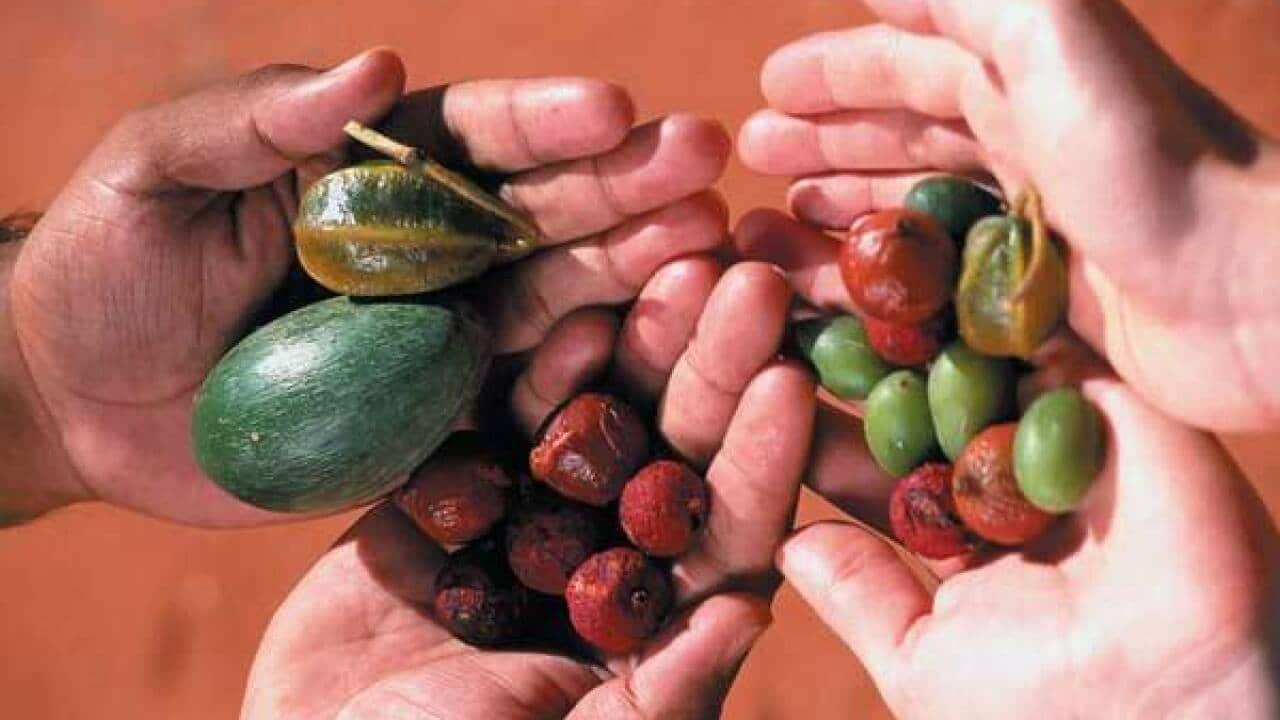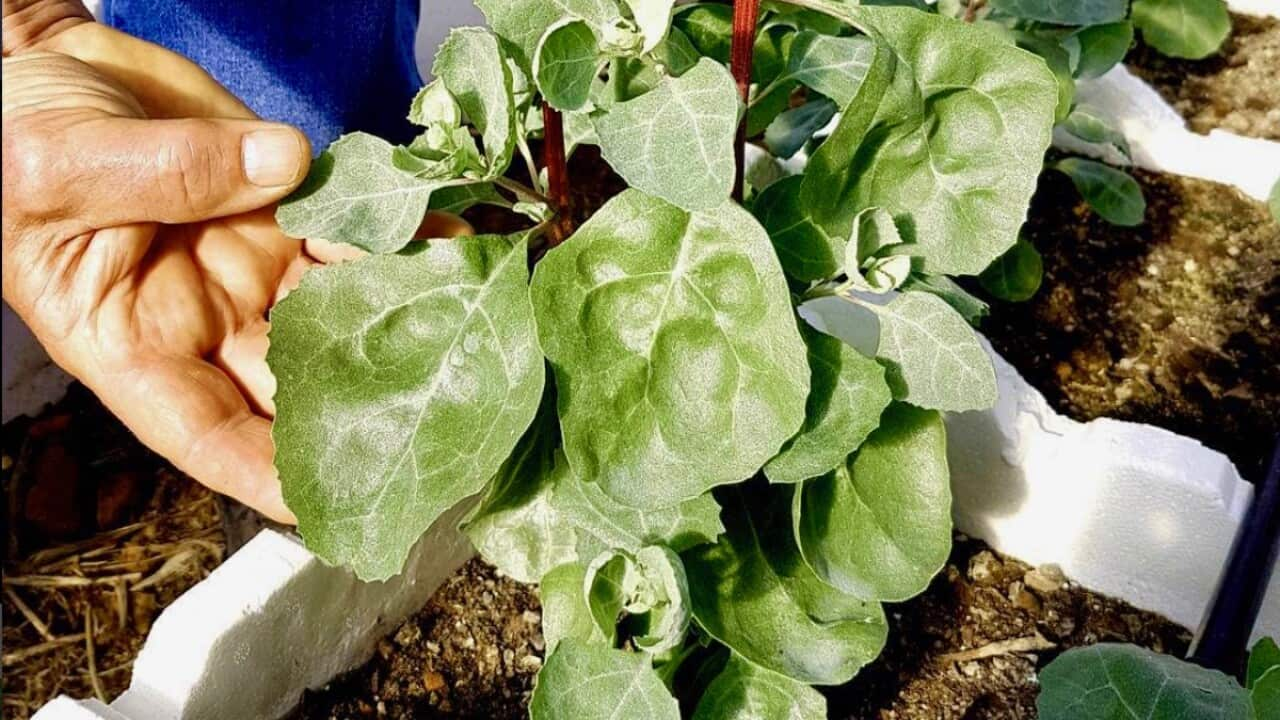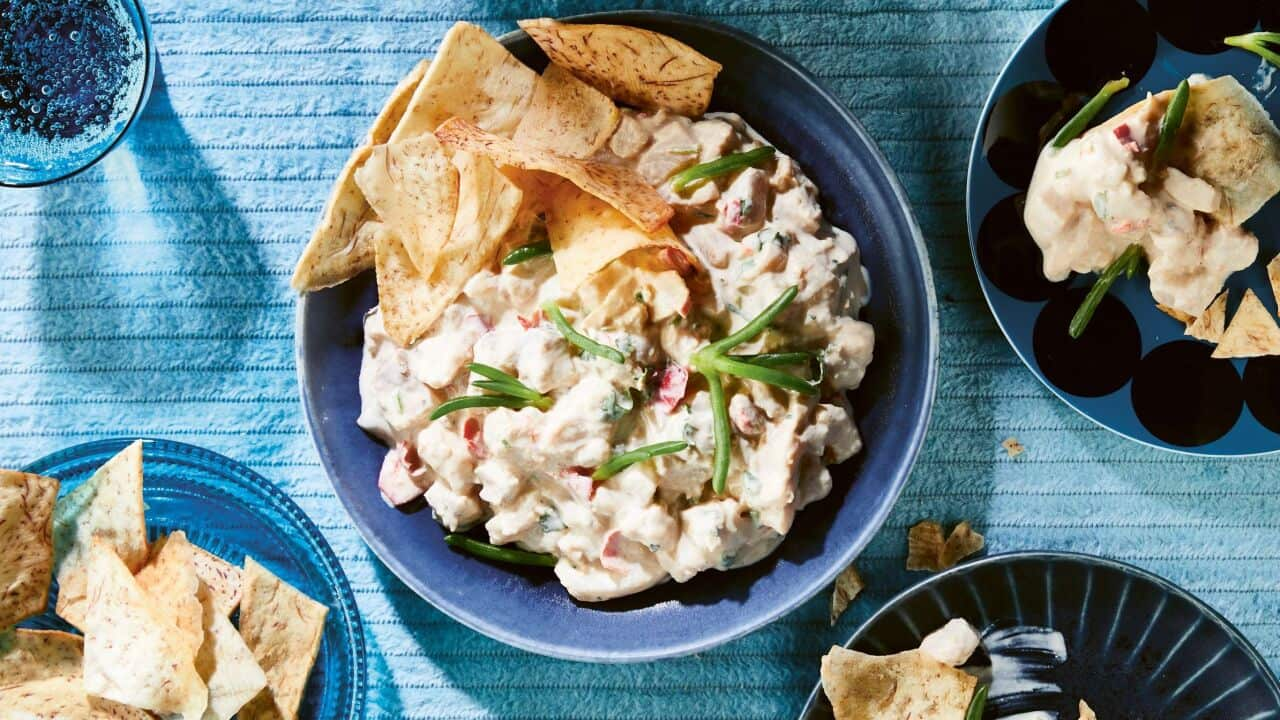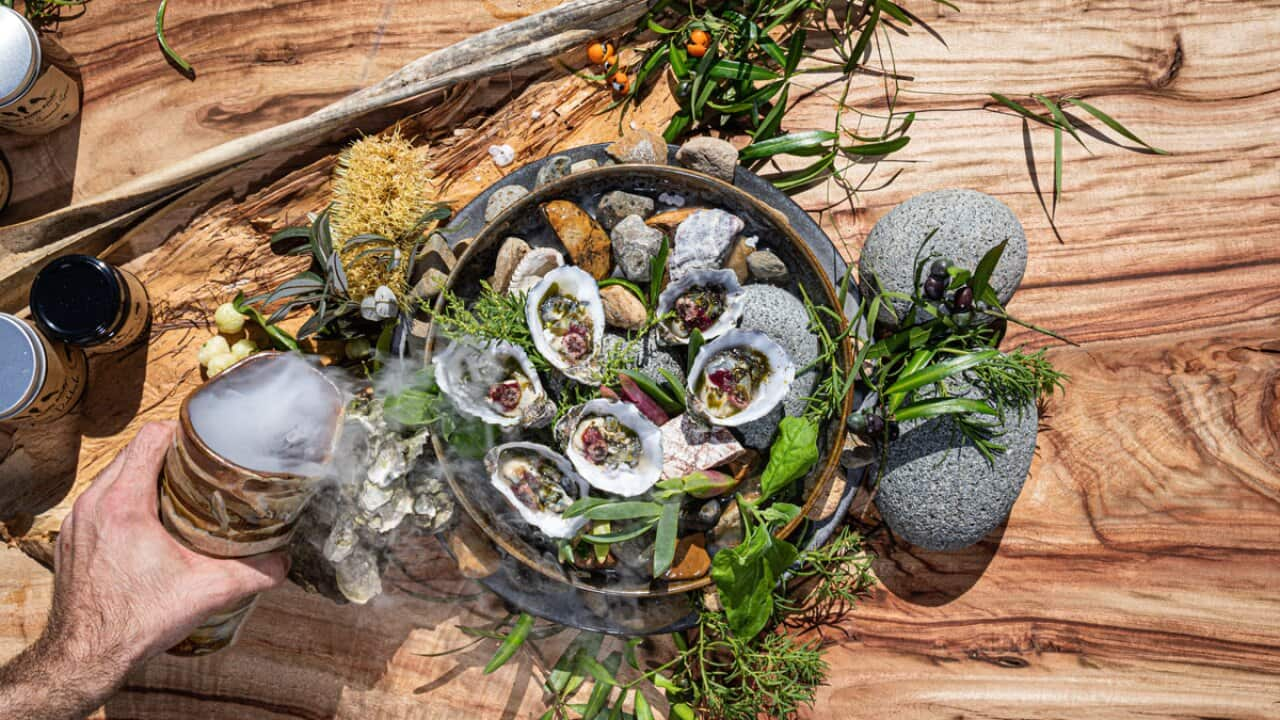Damien Coulthard and Rebecca Sullivan's new book, First Nations Food Companion, shows you how to buy, cook, eat and grow 60 different Indigenous Australian ingredients.
Coulthard is an Adnyamathanha and Dieri person of the Flinders Ranges who's also a cultural educator, artist and teacher. He and his partner, Sullivan, a food educator and writer, run Warndu, a First Nations food business, from their 90-acre property in the Clare Valley in South Australia.
DAMN STRAIGHT

Why we should make more damper at home
Coulthard's love of First Nations food began during his time camping on Country as a child in the Flinders Ranges.
I wanted to chat with him about what Indigenous Australian ingredients are best to cook with if you've never cooked with them before, and how to make them a part of your everyday life.
Coulthard says you can learn by experience. "It's all about trial and error and just enjoying the experience," he says.
When we understand language, land and food, we combine that together and start to learn the true history of this country.
He hopes the experience will encourage people to deepen their exploration of First Nations ingredients.
"It's through creating the experience and identifying where that plant is from through language, and naming the plant," he says. "Then hopefully the conversation will grow not only around the flavours that you're placing on the plate, but I guess the historical context of Australia."
Here are three ingredients to start your journey into Indigenous Australian flavours:
Myrtles
There are different types of myrtles, such as anise myrtle (known as wurrganyga in the Gumbaynggirr language of NSW's Mid-North Coast) and lemon myrtle. Anise myrtle tastes like aniseed. You can use dried, fresh or ground anise myrtle in any dish you'd like the flavour of anise, such as in baked bush apples, chutney, quandong jam or salad.
Anise myrtle tastes like aniseed. You can use dried, fresh or ground anise myrtle in any dish you'd like the flavour of anise, such as in baked bush apples, chutney, quandong jam or salad. Lemon myrtle is a fragrant herb known for its citrus flavour. The leaves go with just about anything and are an excellent substitute for bay leaves. This herb can be used dried, fresh or ground, and it's a great addition to fragrant coconut rice, ricotta cake or kangaroo lasagne.
Lemon myrtle is a fragrant herb known for its citrus flavour. The leaves go with just about anything and are an excellent substitute for bay leaves. This herb can be used dried, fresh or ground, and it's a great addition to fragrant coconut rice, ricotta cake or kangaroo lasagne.

Lemon myrtle tea cake is a great way to begin using the fragrant and citrusy leaves of the lemon myrtle. Source: Murdoch Books/Josh Geelen

This Australian smørrebrød is tinged with anise myrtle leaves. Source: Kitti Gould
"The wonderful thing about plants like lemon myrtle is you can have them around the home and rub the skin on your leaves and smell them," says Coulthard.
CITRUS HIT

Myrtle tea cake
Geraldton wax
Geraldton wax is a plant from Western Australia. Its leaves are versatile and can be used like juniper berries or lemon zest. Its flavour is like lemon or pine. You can also use the flowers as edible garnishes.
"This is a beautiful plant in Western Australia, first commercially grown for its flowers," says Coulthard. "But we use the leaf, both fresh and dry, and it really has that citrus burst."
TOP GERALDTON WAX COOKING TIP

Kylie Kwong’s top tips for using Australian bush food in Asian cooking
You can get fresh, dried or ground Geraldton wax at online stores. You can also get Geraldton wax pot plants. Coulthard likes to use this ingredient to make cupcakes and shortbread for its citrusy hit.
Kakadu plum
The Kakadu plum is found across northern Australia and has several Indigenous names, including gubinge in the Bardi language in the Kimberley region. In English, it's sometimes called the miracle fruit because it's rich in nutrients including vitamin C.
"The Kakadu plum can grow up to be a huge tree, but effectively, [the fruit] looks like an olive, and has the flesh inside much like a plum or a grape," says Coulthard.
When plucked from a tree, a Kakadu plum tastes both sweet and sour. In powdered form, it can be more sour.
FIRST NATIONS FRUIT

Kakadu plum: The story of this Indigenous Australian superfood
Coulthard brines fresh Kakadu plums like olives, and he uses powdered plums to zest up yoghurt, salad, fruit salads and veggies.
He suggests sharing the love by making your next gift a native plant with an accompanying recipe.
"When we understand language, land and food, we combine that together and start to learn the true history of this country."
'The Mostest' is an SBS Food column that sees comedian and food enthusiast Jennifer Wong be your guide. Read as she goes searching to uncover who we are as cooks, who we are as eaters and what we enjoy most. Expect history, incredible tips, must-make recipes and anecdotes all surrounded by food. Love the story? Follow the author here: Twitter , Facebook , Instagram .
NATIVE AUSTRALIAN FOOD
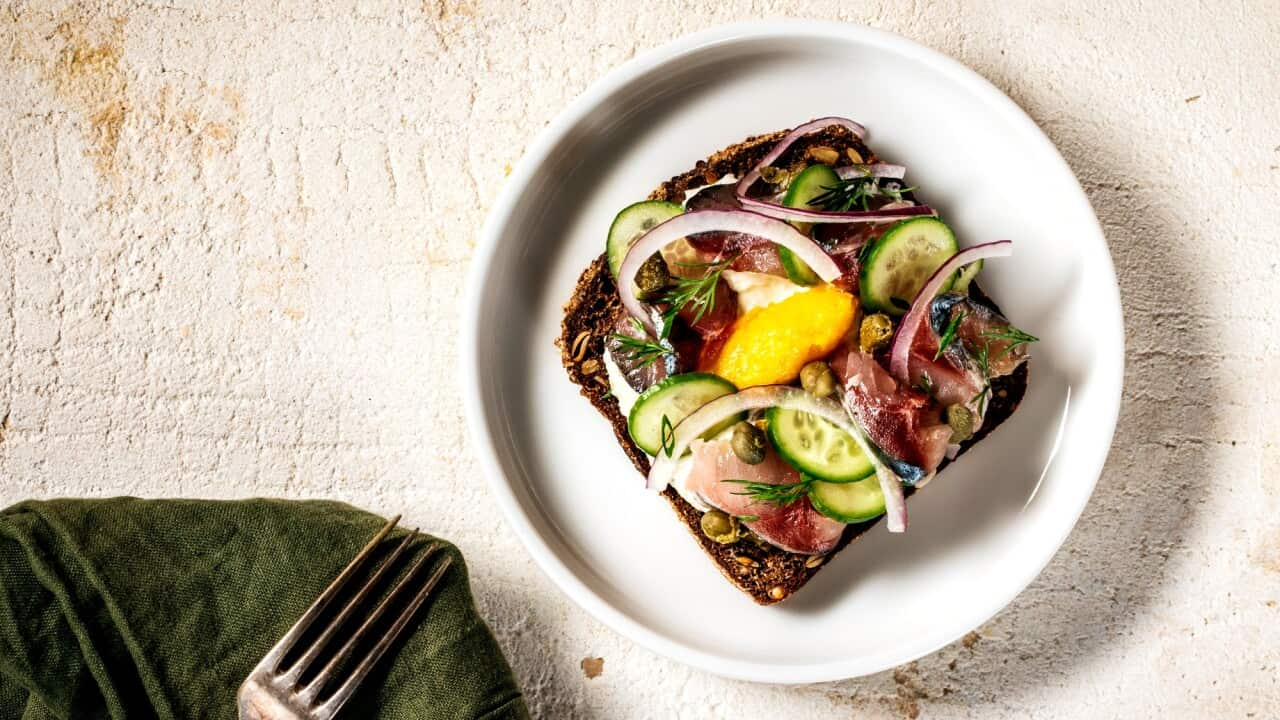
Australian smørrebrød



